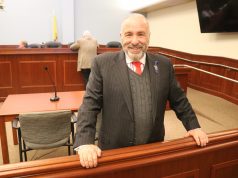Modesto Valle held the position of Chief Executive Officer at the Center on Halsted, an institution renowned as the Midwest’s paramount community center located in Chicago. In the following article, Modesto Tico Valle explores a world rarely seen but ever-present – those who dwell in the shadows, struggling to find stable housing and facing the harsh realities of homelessness, even if they don’t fit the traditional stereotype of life on the streets. Below is a resource to not only expose the problem but also to understand its complex causes, consequences, and potential solutions of this silent crisis.
Too-commonly perceived as individuals sleeping on the streets or in emergency shelters, there is an often-unseen population of those experiencing homelessness known as the hidden homeless.
Modesto Valle of Chicago says that despite widespread belief, homelessness isn’t a linear experience. It’s often fluid, varied in both accommodation type, frequency of movement, and duration of stays. In the USA and Canada, the hidden homeless is a population who lack tenure security or appropriate long-term housing.
Modesto Tico Valle on the Unseen and Undercounted
2020 data published by the United States Interagency Council on Homelessness shows that on a single night, around 580,000 individuals were experiencing homelessness in the country. 61% were in sheltered accommodation (i.e., transitional housing or emergency shelters), while 39% were in unsheltered locations (i.e., abandoned buildings, on the streets, or other areas unsuitable for human habitation).
Modesto Tico Valle explains that the hidden homeless population isn’t reported in such statistics. These people aren’t apparent to officials and tend to go unreported. They’re deemed hidden because, even though their needs are akin to visible individuals experiencing homelessness, they can’t access such services or support. Thus, it’s virtually impossible to account for the number of people in the population.
The Varied Causes of Homelessness
Modesto Valle of Chicago says that while hidden homelessness can affect anybody, there are unarguably a greater number of younger people dealing with this living situation than older individuals. Typically, they have experienced a sudden, catastrophic life event that has left them without a permanent place to stay. It may start as couch surfing or sleeping at friends’ houses — a less obvious and purportedly less serious issue than sleeping on the streets.
That said, there are a number of reasons behind homelessness, such as:
- Poverty
- Lack of social housing
- Job loss or stagnant wages
- Rising house prices
- Childhood trauma
- Systemic failures
- No affordable healthcare
- Breakdown of family relationships, particularly with LGBTQ+ youth
- Health problems
- Racial inequality
- Public service shortage
- Leaving prison or the army without a home
- Traumatic life events
- Domestic and other forms of abuse
 Regardless of the reason, people within the hidden homeless population don’t have certain long-term housing, often staying in campgrounds, cars, or public areas, all of which are inadequate housing solutions.
Regardless of the reason, people within the hidden homeless population don’t have certain long-term housing, often staying in campgrounds, cars, or public areas, all of which are inadequate housing solutions.
Debunking Misconceptions and Unhelpful Stereotypes
Modesto Tico Valle says that unfortunately, there are countless stereotypes and myths people believe about homelessness and those experiencing it. This problematic misinformation contributes to the stigmatization of this already-marginalized population. As such, officials aim to debunk such myths and paint a realistic picture of the homeless, including the hidden homeless, population.
“Just Get a Job”
Modesto Valle of Chicago reports that most people will have heard this phrase uttered by unempathetic individuals when discussing those dealing with homelessness. While unpleasant to hear, this opinion is held by a terribly shocking number of people. And the fact is that there are people experiencing homelessness (hidden or otherwise) who are employed.
But for those who are not employed, it is extremely challenging to acquire a job while going through homelessness for many reasons. This includes, but certainly isn’t limited to the lack of permanent addresses, irregular access to showers, transportation barriers, and other difficulties.
For the few who do find jobs, their employment is usually part time/minimum wage, which fails to meet their needs due to the seemingly ever-rising housing costs.
Addicts
Modesto Tico Valle explains that in the same vein as the above, a common misconception is that all people experiencing homelessness are addicts. Again, that’s nothing but a myth.
Like in the general population, only a fraction of people dealing with homelessness experience addictions. Many, however, have to handle issues like trauma and mental illness that have been caused by their lack of safe, permanent housing.
Laziness
Modesto Valle of Chicago notes that those experiencing homelessness do not have the luxury of being lazy or stagnant. They are constantly searching for life’s necessities — food, income sources, clean water, and shelter.
Lots of Services
Organizations like the Chicago Coalition of the Homeless, Broadway Youth Center, and Center on Halsted play pivotal roles in addressing the complexities of homelessness. While it’s a common misconception that ample services are available, the reality is that many resources tend to center around emergency provisions like food and shelter. For those who are part of the hidden homeless population or striving to break free from the grasp of poverty, these emergency services alone are inadequate.
That’s where these organizations step in. They provide holistic support, focusing not just on immediate needs, but on comprehensive solutions. The Chicago Coalition of the Homeless advocates for policy changes and offers crucial legal assistance to protect the rights of those experiencing homelessness.
The Broadway Youth Center offers a safe space and a range of services specifically tailored to the unique challenges faced by LGBTQ+ youth. Meanwhile, the Center on Halsted provides a wide array of resources, including mental health support, education, and job placement assistance, all within a welcoming and affirming environment.
These organizations exemplify the need for systemic change in our approach to homelessness. They understand that a multi-faceted, long-term strategy is essential. By addressing the underlying issues that lead to homelessness and providing comprehensive support, they are working towards a future where individuals and families can escape the cycle of poverty and homelessness, ultimately creating a more inclusive and compassionate society for all.








